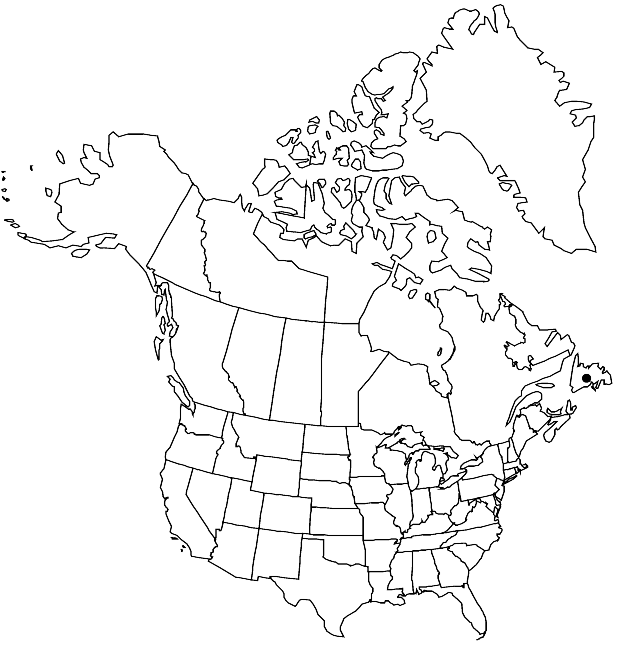Difference between revisions of "Braya longii"
Rhodora 28: 202. 1926.
FNA>Volume Importer |
FNA>Volume Importer |
||
| Line 50: | Line 50: | ||
|publication year=1926 | |publication year=1926 | ||
|special status= | |special status= | ||
| − | |source xml=https://jpend@bitbucket.org/aafc-mbb/fna-data-curation.git/src/ | + | |source xml=https://jpend@bitbucket.org/aafc-mbb/fna-data-curation.git/src/8f726806613d60c220dc4493de13607dd3150896/coarse_grained_fna_xml/V7/V7_880.xml |
|tribe=Brassicaceae tribe Euclidieae | |tribe=Brassicaceae tribe Euclidieae | ||
|genus=Braya | |genus=Braya | ||
Revision as of 18:00, 18 September 2019
Plants scapose; sparsely pubescent, trichomes simple and 2-forked. Stems simple or few to several from base, erect, (unbranched), 0.3–1.1(–1.5) dm. Basal leaves: blade narrowly spatulate to oblanceolate, (0.5–)1–3(–5) cm × 1–3.5 mm, base (membranous), broadly expanded near point of attachment, margins entire, (sparsely ciliate proximally), apex obtuse. Cauline leaves: 0 or 1 (or a leaflike bract subtending proximalmost pedicel). Fruiting pedicels erect or ascending, (1.2–)1.5–4.5(–4.9) mm. Flowers: sepals 2–3(–3.5) × (1.1–)1.2–1.7 mm; petals white (or claw purplish), (3–)3.3–4.8(–5) × (1.2–)1.4–2.5(–3) mm, (claw and blade usually well-differentiated, apex rounded); filaments 1.7–2 mm; anthers oblong, 0.3–0.4 mm. Fruits lanceoloid-subulate, not torulose, (straight), (0.3–)0.4–0.8(–1) cm × (0.7–)1–1.5(–1.7) mm; valves glabrous or, sometimes, sparsely pubescent; septum margin broadly expanded basally (forming sacklike pouch around proximalmost seed in each locule); ovules 10–16 per ovary; style 0.5–1(–1.2) mm; stigma 2-lobed or entire. Seeds somewhat uniseriate, oblong, 1–1.4 × 0.5–0.9(–1) mm. 2n = 56.
Phenology: Flowering Jun–Jul.
Habitat: Limestone barrens
Elevation: 0-60 m
Distribution

Nfld. and Labr. (Nfld.).
Discussion
Of conservation concern.
Selected References
None.